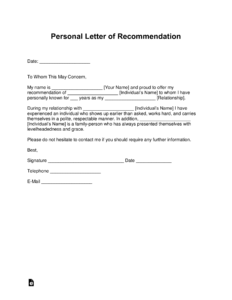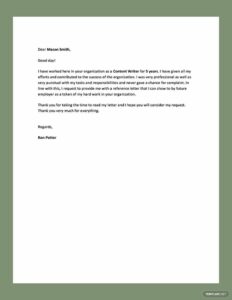Utilizing such a framework offers several advantages. It streamlines the recommendation process, allowing recommenders to respond quickly and thoroughly. This promptness reflects positively on both the candidate and the recommender. Furthermore, a consistent structure ensures all requests are addressed with the same level of detail and professionalism, promoting fairness and reducing potential bias. Finally, a well-crafted structure can help the recommender present the candidate in the best possible light, highlighting relevant strengths and accomplishments.
This understanding of structured recommendation responses sets the stage for a deeper exploration of best practices in creating and using them effectively. Topics such as content organization, tailoring responses to specific inquiries, and maintaining confidentiality will be addressed in the following sections.
Key Components of a Structured Recommendation Reply
Effective structured replies for employment recommendations typically incorporate several key components to ensure comprehensive and informative responses.
1: Candidate Identification: Clear identification of the candidate being discussed, including full name and any other relevant identifiers like previous job titles or dates of employment, ensures clarity from the outset.
2: Relationship Description: Detailing the nature and duration of the professional relationship between the recommender and the candidate provides context for the subsequent evaluation.
3: Skills and Qualifications Assessment: A thorough assessment of the candidate’s skills, qualifications, and experience relevant to the target role forms the core of the response.
4: Performance Examples: Providing specific examples of the candidate’s performance and accomplishments substantiates the assessment and offers concrete evidence of their capabilities.
5: Strengths and Weaknesses: A balanced perspective, including both strengths and areas for development, adds credibility and offers a more nuanced portrayal of the candidate.
6: Suitability for Role: Directly addressing the candidate’s suitability for the specific role being applied for, referencing the job description or requirements, provides highly relevant information to the hiring manager.
7: Contact Information: Providing contact information for follow-up questions allows for further clarification or discussion if needed.
8: Confidentiality Statement (Optional): Including a statement regarding the confidentiality of the information provided can reinforce professional ethics and build trust.
By incorporating these components, a structured reply ensures all essential information is conveyed efficiently and professionally, supporting the candidate’s application while respecting the recommender’s time.
How to Create a Reference Request Response Template
Creating a standardized response template for reference requests streamlines the recommendation process, ensuring consistency and efficiency. The following steps outline a structured approach to developing such a template.
1: Establish a Consistent Format: Adopt a clear and professional format, such as a business letter or email template, to maintain a consistent look and feel across all responses.
2: Incorporate Candidate Identification: Begin by clearly identifying the candidate being referenced, including their full name and any relevant identifiers like previous roles or employment dates.
3: Define the Relationship: Describe the nature and duration of the professional relationship with the candidate to provide context for the evaluation.
4: Structure Skills Assessment: Develop a standardized section to assess the candidate’s skills and qualifications, using consistent criteria and metrics for evaluation.
5: Include Performance Examples: Incorporate designated areas for specific examples demonstrating the candidate’s performance and accomplishments in relevant areas.
6: Address Strengths and Weaknesses: Create sections for a balanced assessment of both strengths and areas for potential development. This offers a well-rounded perspective of the candidate.
7: Evaluate Suitability for Role: Include a section specifically addressing the candidate’s suitability for the target role based on the provided job description and requirements.
8: Provide Contact Information: Conclude with clear contact information for follow-up inquiries or clarification.
A well-crafted template ensures thorough and efficient responses to reference requests, benefiting both the recommender and the candidate. Regular review and updates maintain relevance and alignment with evolving professional standards.
Careful consideration of structured response frameworks for candidate recommendations offers substantial benefits to all stakeholders. Standardized templates facilitate efficient and comprehensive responses, ensuring consistent evaluation criteria and reducing the burden on recommenders. This approach not only streamlines the hiring process but also enhances professionalism and fairness in candidate assessment. Furthermore, the use of templates helps present candidates in a consistent and informative manner, enabling hiring managers to make more informed decisions. By promoting thoroughness and timeliness, these frameworks elevate the overall quality of the recommendation process.
Effective implementation of standardized recommendation response practices requires ongoing evaluation and refinement. Organizations and individuals should prioritize the development and maintenance of robust templates tailored to specific needs and industry contexts. This proactive approach to optimizing the recommendation process contributes significantly to successful talent acquisition and career advancement, ultimately fostering a more robust and efficient professional landscape.



